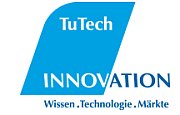|
|
Why transferring Obamas campaign to Germany does not work26. August 2009 – 13:25 by Hans Hagedorn |
Expectation were high: The 2009 German Federal Election should be a real “online election” with big online campaigns, inspired by the success the Obama-campaign had had in 2008.
And indeed politicians like German chancellor Angela Merkel (CDU) or the counter-candidate Frank-Walter Steinmeier (SPD) do have their profiles in well-known social networks: You can find their profiles on Facebook as well as on the German social networks StudiVZ and MeinVZ. Candidates´ logos and websites resemble Barrack Obamas Websites with big pictures, videos and links to other online activities (see Merkel, Steinmeier).
But does it transferring the American campaign to the German Federal Elections really work?
Micah Sifri says: No!
Sifri founded the web-portal Personal Democracy and writes for the weblog Techpresident.com. In an interview with the German web-format “Elektrischer Reporter” he says that the main problem is that the German elections are status-quo-elections rather than change elections: “In a status-quo-election, where the candidates are not exciting, the internet won´t change that.” Only when there is a desire and a real chance for political change, volunteers who can exhaust the possibilities of the internet get more important.
According to Sifrin, Obama had understood the power of these volunteers and of voter generated activity and did not concentrate on one specific tool or one specific network, but on a combination of them all. (You can view the video-interview here: https://www.elektrischer-reporter.de/rohstoff/video/152/ . The audio is in English.)
Nevertheless some projects by civilians give an anticipation how a voter-driven activities online could look like in Germany. One of them is website “wechsel-waehler.de” (Wechselwähler meaning swing voter). Six swing voters moved in a shared flat where they will live until the elections. They blog about their political viewpoints and about recent news - and on each Sunday they have breakfast with a political guest. Videos of these Sunday roundtables can also be viewed on the website.
Simone Gerdesmeier, Zebralog Berlin










